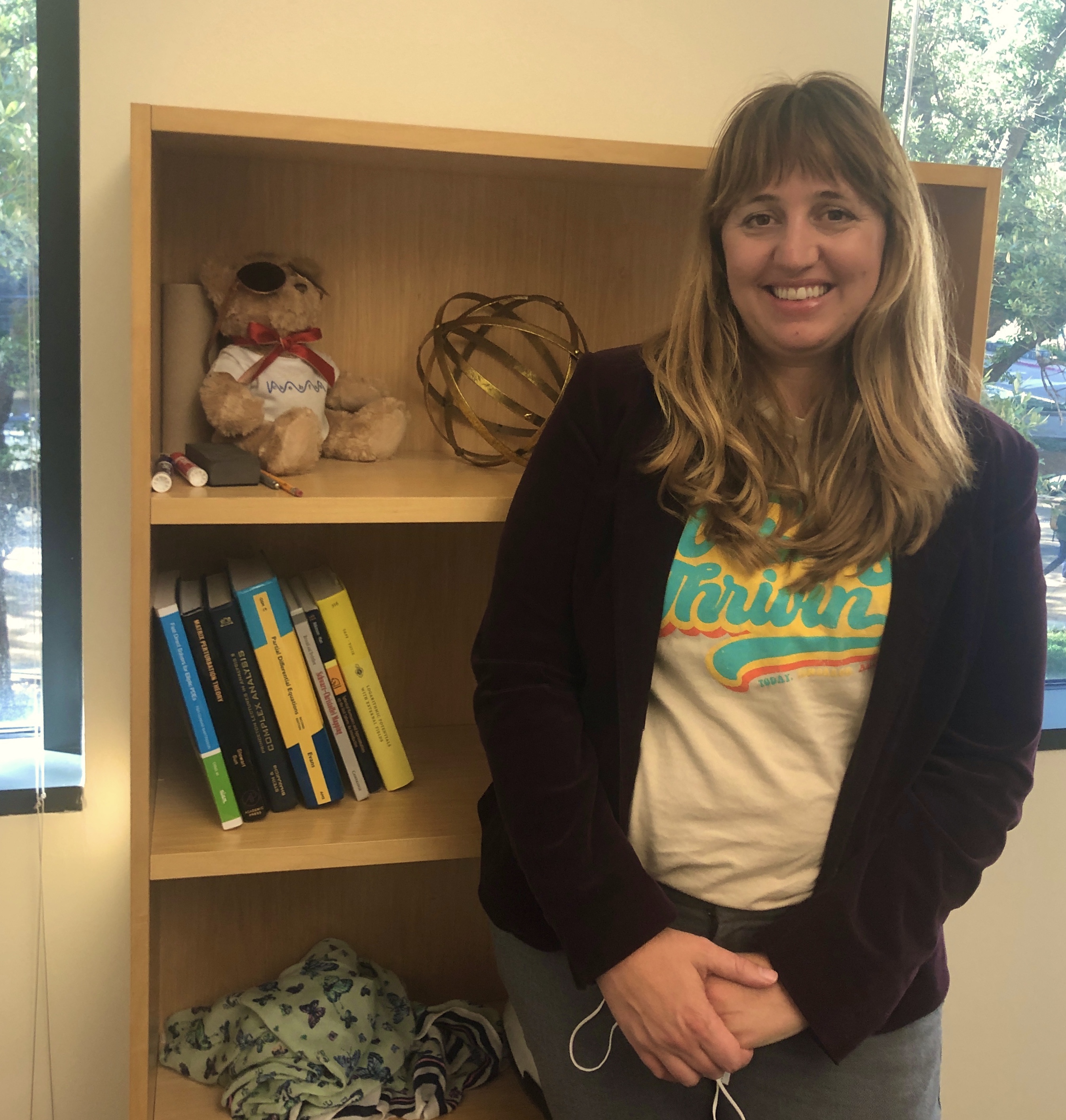Heather Wilber is an NSF postdoctoral fellow who has just joined the Oden Institute from Cornell University where she completed her PhD in Applied Mathematics in May 2021.
Dr. Wilber is also a recipient of the 2022 Association of Women in Mathematics (AWM) Dissertation Prize for a study entitled, Computing numerically with rational functions. Although only published earlier this year, it has resulted in multiple papers in scientific journals already, appearing in the SIAM Journal of Scientific Computing, Linear Algebra and its Applications, and Constructive Approximation (to appear).
It was also described by one commentator as a “beautifully written dissertation.”
Surely a rare compliment for a mathematical thesis? Perhaps, but Wilber’s road less traveled into applied mathematics actually began when she was contemplating getting an English degree at the University of Idaho.
“I wanted to be a poet,” she said. “I tutored math as part of a work study placement for my degree. My options were limited to either working in a kitchen washing dishes or tutoring math. I was good at math in school. So I said, ‘Okay, I'll tutor math.’
Wilber found she enjoyed solving numerical problems. So much so that she took a niche undergraduate course colloquially referred to as math for poets. This led her further away from poetry while feeding her increased appetite for mathematics. “I found myself at a crossroads,” she noted.
From Idaho to Cornell
And thankfully we know the direction taken. Upon graduation, Wilber completed a Masters in Applied Mathematics from Boise State University. “From there, I became very interested in numerical analysis and began working on a project with my advisor that involved collaborations with the ‘Chebfun’ research group at the University of Oxford.
Named after 19th century Russian mathematician, Pafnuty Chebyshev, the group introduced her to some new areas.
“I got to work on some cool scientific computing with problems on the surface of a sphere and on a disc. And I just kind of continued in that vein.”
Wilber then completed a PhD at Cornell University, studying numerical analysis with Dr. Alex Townsend.
Wilber is now working with Dr. Per-Gunnar Martinsson, Professor of mathematics at UT Austin’s College of Natural Sciences and core faculty at the Oden Institute for Computational Engineering and Sciences. “He is well-known in many of the areas I’m interested in, particularly numerical analysis. I've wanted to work with him for a long time.”
Wilber’s current research involves problems at the interface of approximation theory, computational mathematics and scientific computing. The development and analysis of low rank approximation methods, direct solvers for partial differential equations, algorithms for solving linear matrix equations and evaluating functions of matrices, and robust algorithms for computing with rational approximations to functions, are also part of her numeric arsenal.

